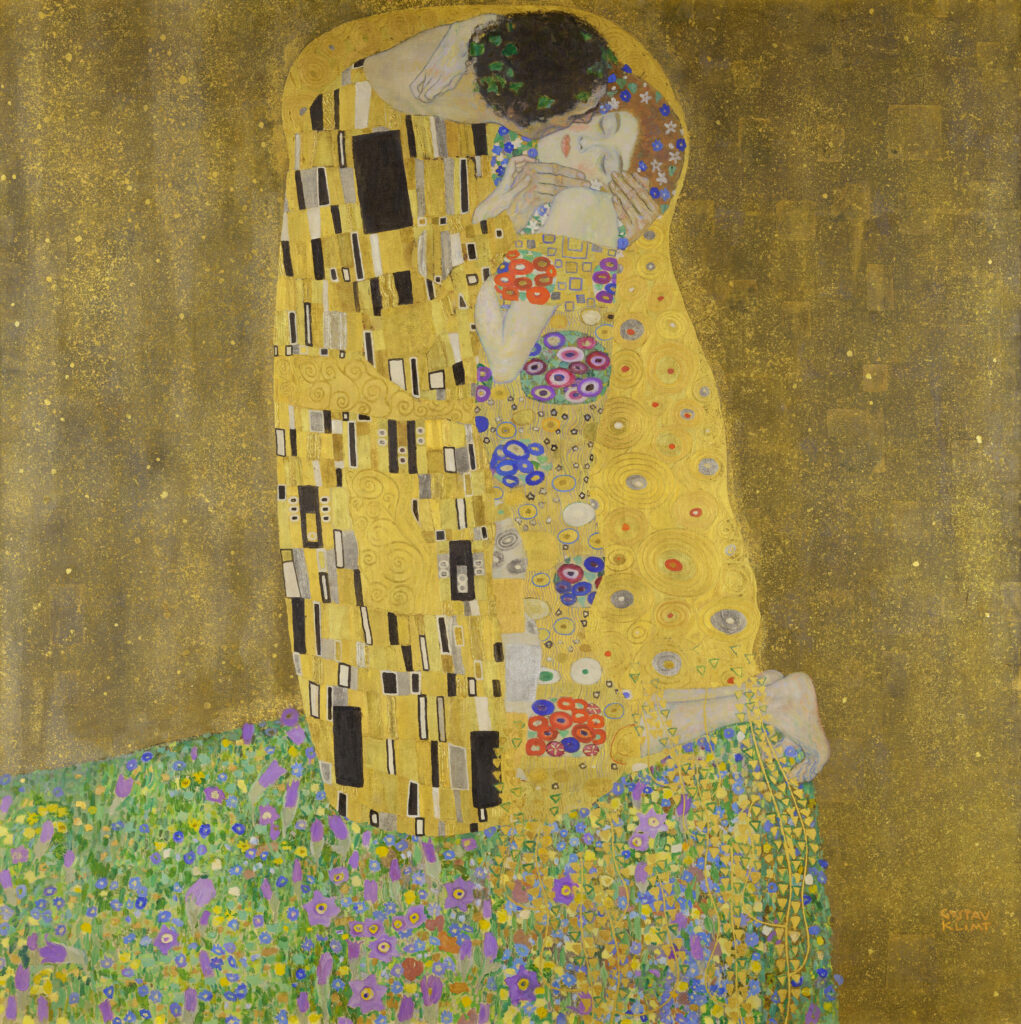
I recently visited Vienna to find Gustav Klimt’s most famous painting ‘The Kiss’ and the forgotten dress designer and muse who inspired it, Emilie Flöge. During my 3-day trip, I followed in the footsteps of Flöge from Mariahilfer Strasse to Cabaret Fledermaus and spent time inside the city’s museums and coffee houses, seeking out her side of the story, which lies behind one of world’s most famous and best-loved paintings…
‘Come for a kiss!’
As soon as you arrive at Vienna International Airport, the city announces its artistic heritage. All along the walls of the arrivals gate are swirling patterns and figures from Gustav Klimt’s golden paintings. “Come for a Kiss!” has been printed in huge letters above a reproduction of his most famous, and romantic, masterpiece in which a robed couple embrace. The man in ‘The Kiss’ (1907-8) is thought to be the artist himself, crowned with ivy leaves, as in other self-portraits. But he’s just one half of this picture; also depicted here is the most significant woman in his life and career: forgotten fashion designer and muse, Emilie Flöge.
I had arrived in Vienna to walk in the footsteps of this great and radical creative of the 20th century…
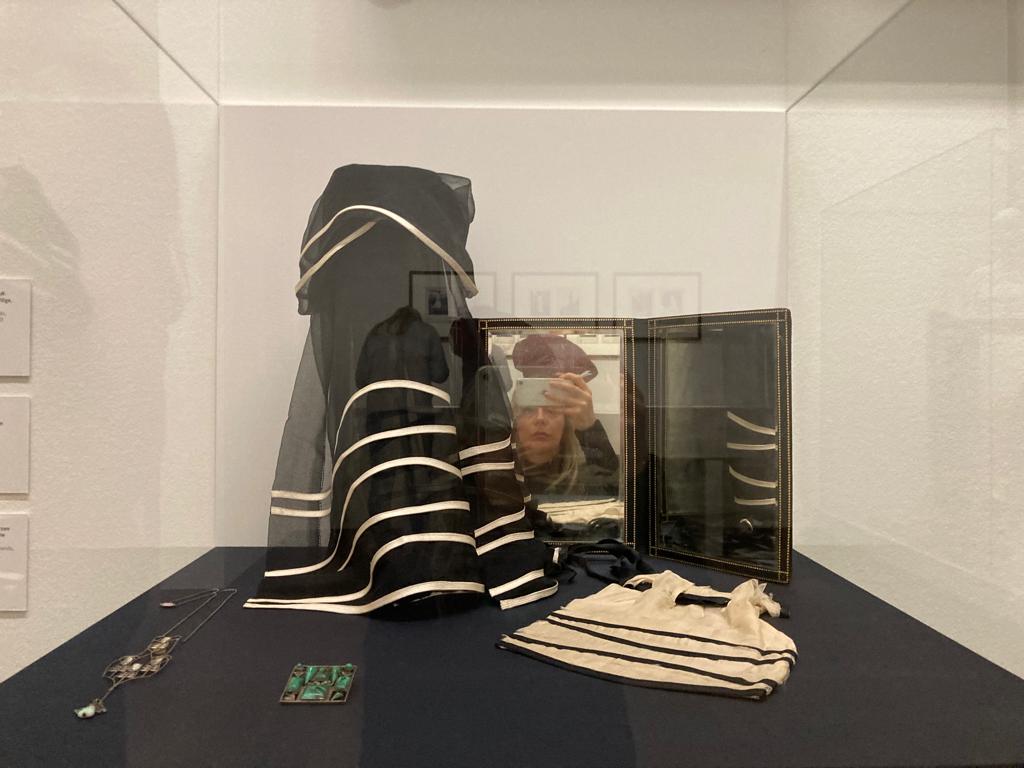
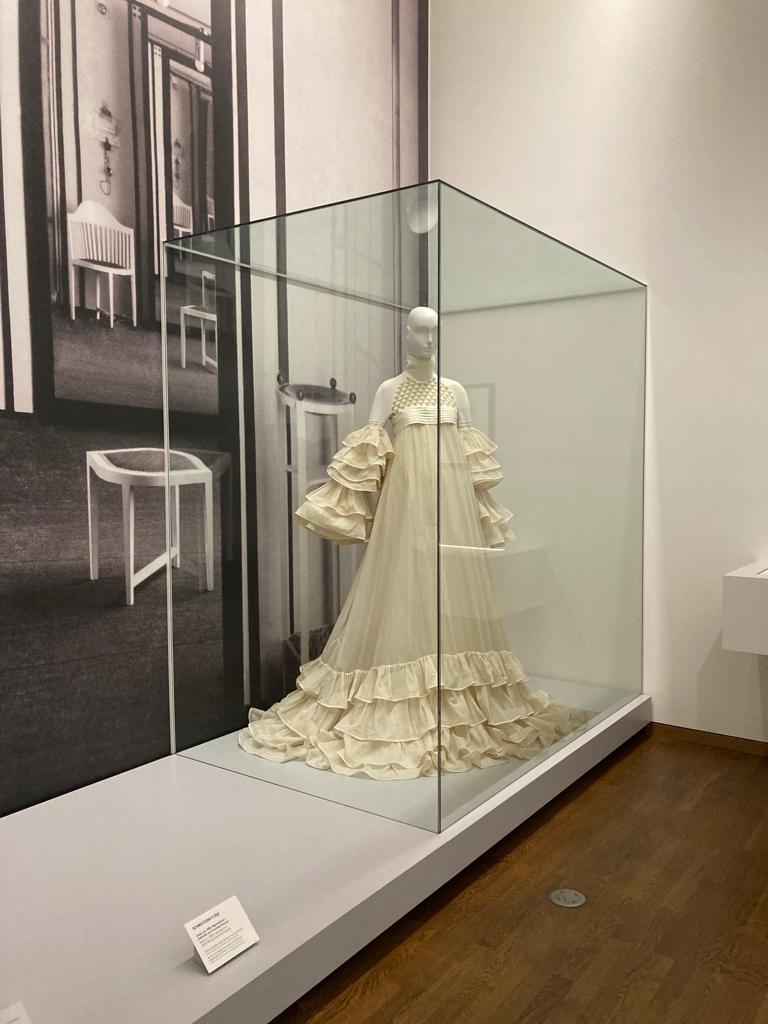
Emilie Flöge’s dress designs at the Leopold Museum
On my first morning in the city, I headed straight for the Leopold Museum. Here, there is a whole room dedicated to the fashion house founded and managed by Flöge and her two sisters. It was in 1904 that these three women opened Schwestern Flöge on Vienna’s bustling Mariahilfer street. In the museum’s reconstructed room is an example of the ‘Reform Dress’ which Flöge designed as a modern, long and flowing corsetless dress to liberate women’s bodies. She decorated each individual piece in swirling and geometric patterns, which directly inspired Klimt’s style.
The pair had met around a decade earlier, when Klimt’s younger brother, Ernst, had married Helene Flöge. Following the wedding, the artist became a frequent guest at the Flöges’ family home, where he met Helene’s three siblings, including her youngest sister, Emilie. But it wasn’t just family ties which drew Klimt to Flöge: aged seventeen, she was already a talented seamstress and aspiring fashion designer who was equally interested in and committed to the ideas of the Vienna Secession which Klimt had co-founded.
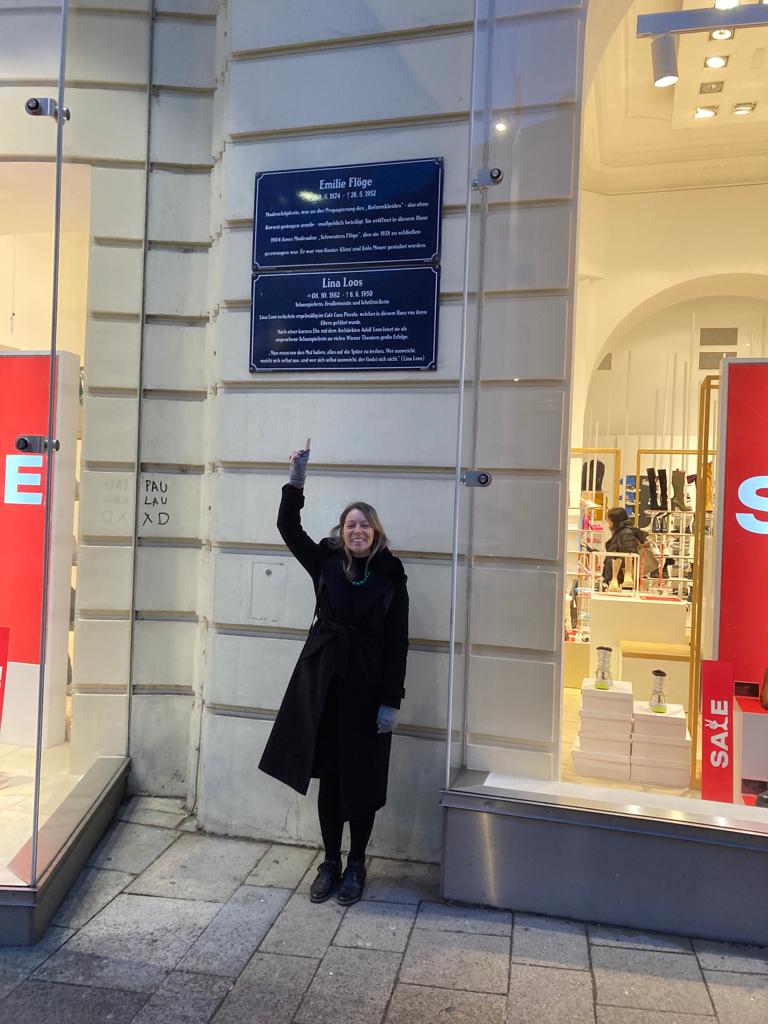
Site of Emilie Flöge’s dress shop on Mariahilfer Strasse
A short walk from the Leopold Museum is Mariahilfer Strasse, where a plaque on the wall marks the spot where Flöge’s successful fashion house was located, at the very heart of the city. A former apprentice of the three sisters, Herta Wanke, recalled that ‘it was Emilie Flöge in particular who kept the salon. It was only due to her initiative that the firm reached such a height.’ The youngest sister was the one who not only sewed and designed garments but, as Wanke accounted, ‘directed the whole fashion house’, which became particularly well-known for its range of non-conforming reform dresses and one of the city’s top fashion salons.
Welcoming the women of Viennese high society into Schwestern Flöge, Flöge dressed them in her haute-couture designs for which she took inspiration from an extensive personal collection of folk art and festival dress which she owned and exhibited in the store. As her apprentice recalled, there were ‘glass display cases with beautiful embroideries, Hungarian national costumes, Slovakian needlework, which were something quite exquisite’. The bold colours, symbolic shapes and intricate geometric patterns of these pieces not only informed her own flamboyant creations, but also appear in the paintings of Klimt.
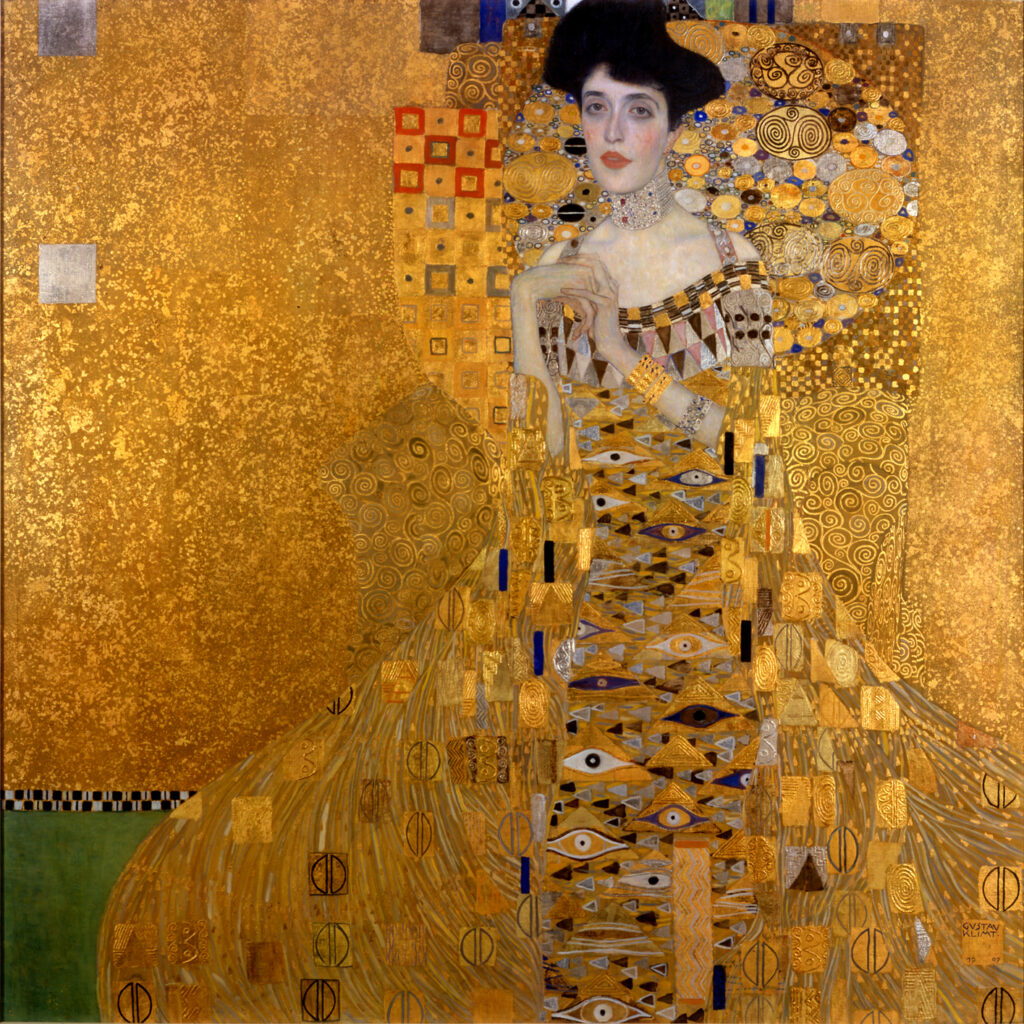
It was in this shop that Klimt also found many of his wealthy models and patrons, keen to be represented by him. Sonja Knips, Szeréna Lederer, Friederike Maria Beer and Adele Bloch-Bauer, adorned in Flöge’s ornate dresses, were among those who posed for the artist. It is Bloch-Bauer who sat for the iconic painting ‘The Woman in Gold’ (1907), in which she appears empowered, in a wondrous flowing dress embellished with swirling, golden patterns, upon a stylised throne.
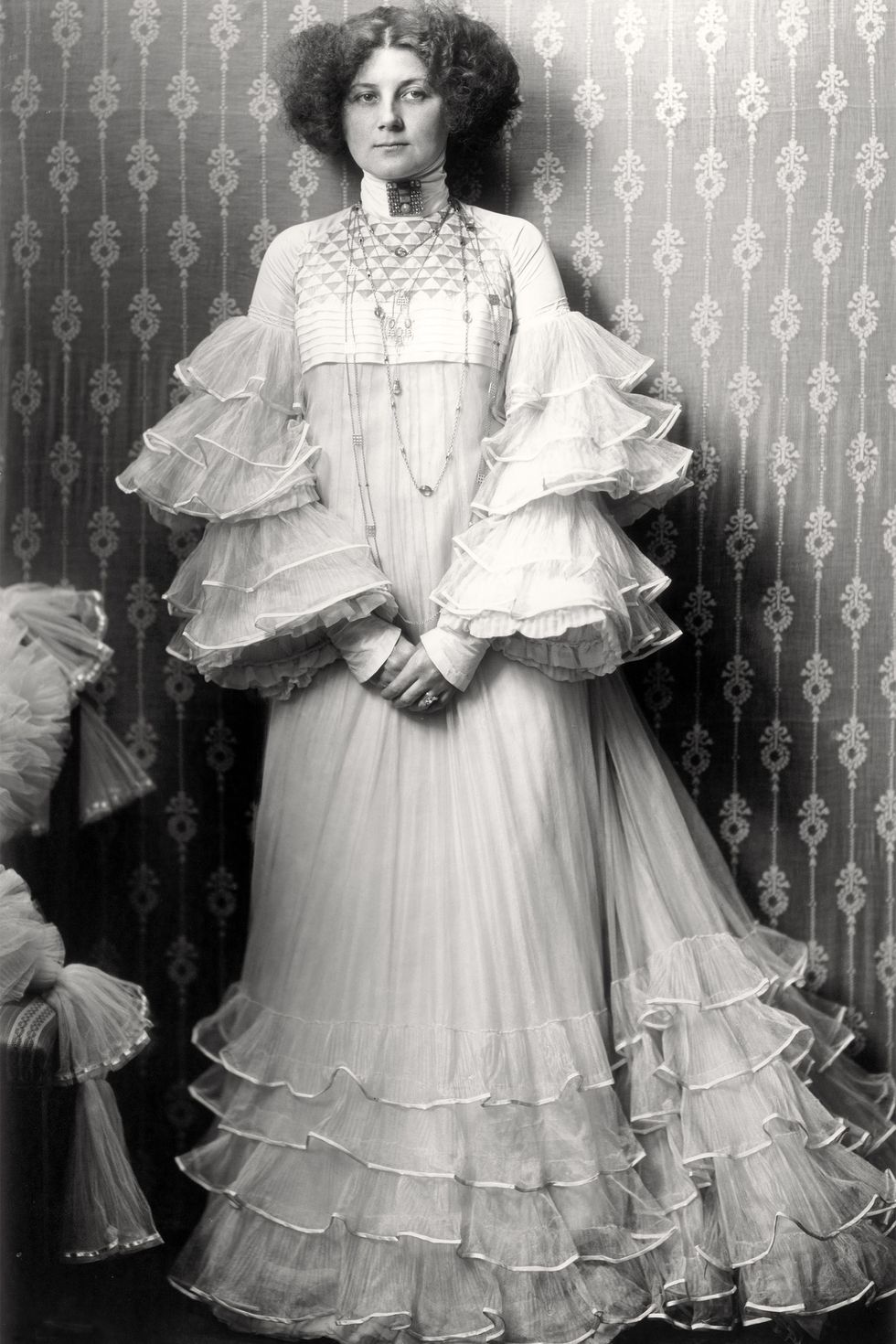
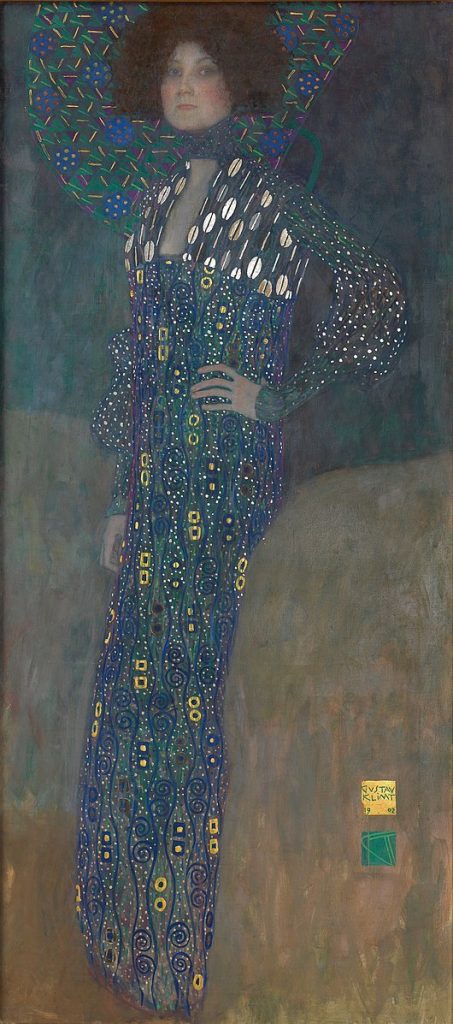
Emilie Flöge’s portrait at the Wien Museum
The Wien Museum has the years around 1900 as one of the artistic focal points of its collection. This naturally includes Flöge and Klimt, represented in the artist’s 1902 portrait of the fashion designer. Aged twenty-eight, Flöge models one of her own creations – the long blue-mottled robe, embellished with purple spirals, white dots and gold squares, falls to her feet. Exuding confidence, she holds one hand defiantly on her hip, while staring straight at the artist. Although she is naturally tall and slim, Klimt has emphasised her stature to present her as a towering and proud figure. From this point onwards, it can clearly be observed that Klimt’s relationship with fashion begins to dominate his paintings.
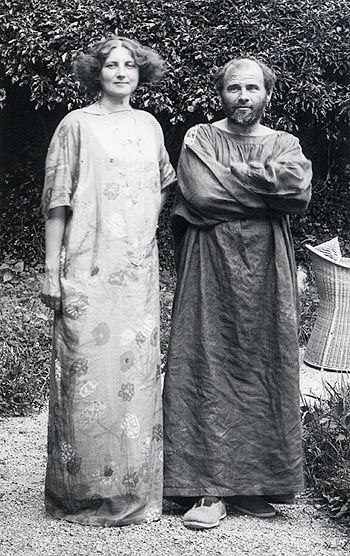
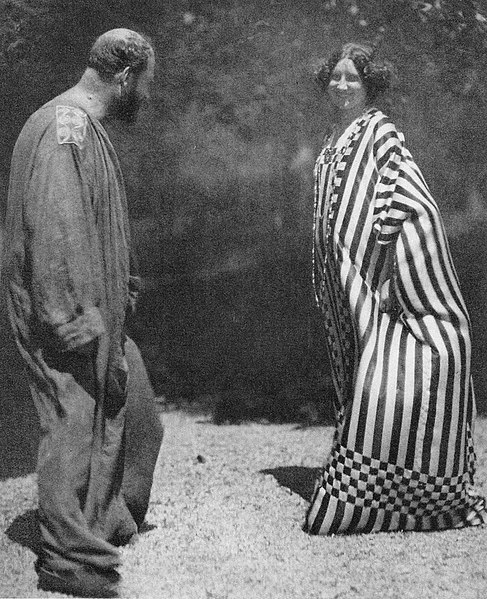
Flöge opened up the world of fashion for Klimt, and they soon began to collaborate on a range of dresses: taking inspiration from her collection of folk art, as well as stage costumes, kimonos and kaftans, Klimt created designs which Flöge then sewed in the Schwestern Flöge workshop. Numerous photographs show the pair sailing together on a boat on Lake Attersee, where they spent many summers together between 1900 and 1916, along with the wider Flöge family. In these images, they are both dressed in long reform robes embroidered in their designs; mirroring one another, Klimt and Flöge appear as equal and artistic companions.
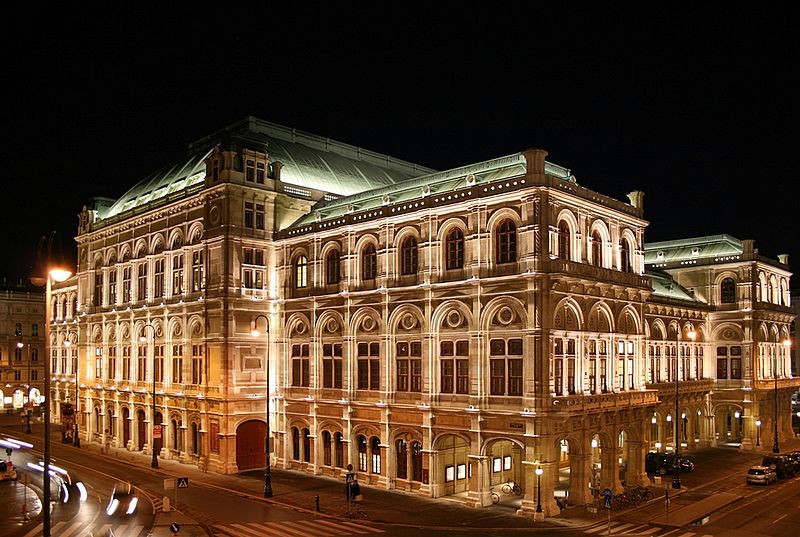
Vienna’s Opera house
As companions, Flöge and Klimt would spend time together enjoying the culture of Vienna, including opera at Wiener Staatsoper. Between 1897 and 1913 Klimt wrote around four hundred letters and postcards to Flöge. In short notes, Klimt invites Flöge to attend plays, operas and concerts with him: ‘Ballet Russe extended – so we could go to it together,’ he writes on 24 February 1912.
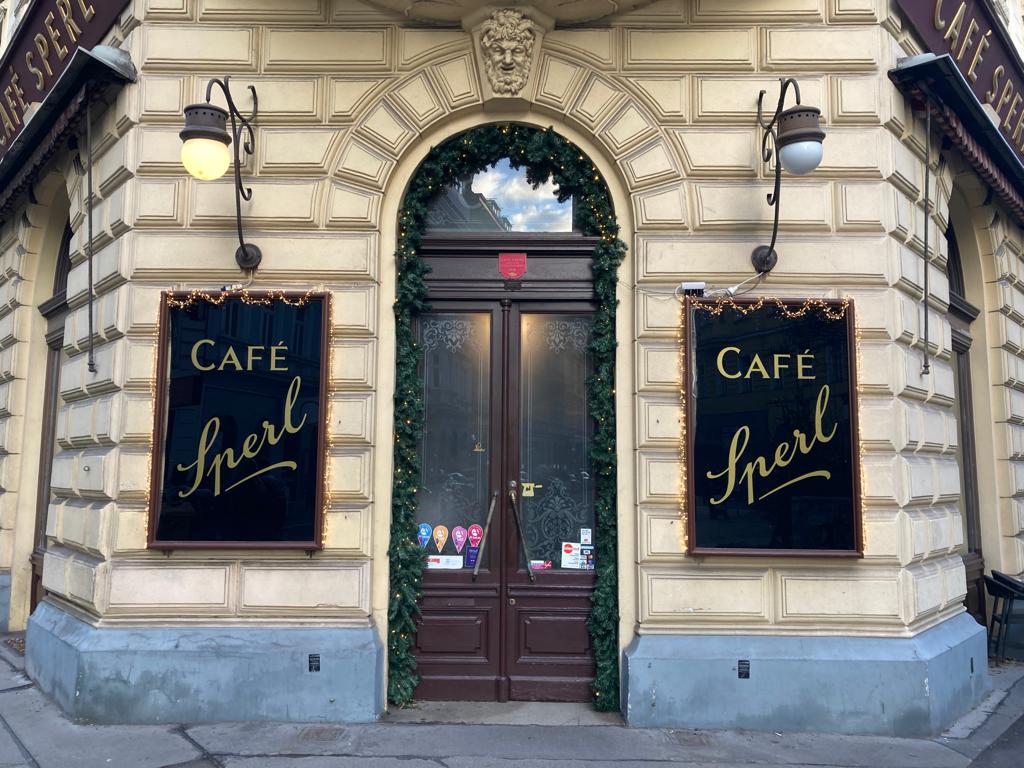
Café culture
Café culture is also part of the story. Café Sperl, Café Central and Café Museum are three traditional Viennese cafés which were frequented by painters such as Klimt, Egon Schiele and Adolf Loos, the philosopher Ludwig Wittgenstein, and many other thinkers and creatives in early 20th-century Vienna, including Flöge. I recommend trying a slice of Sachertorte, Maronitorte or a generous serving of Apfelstrudel…
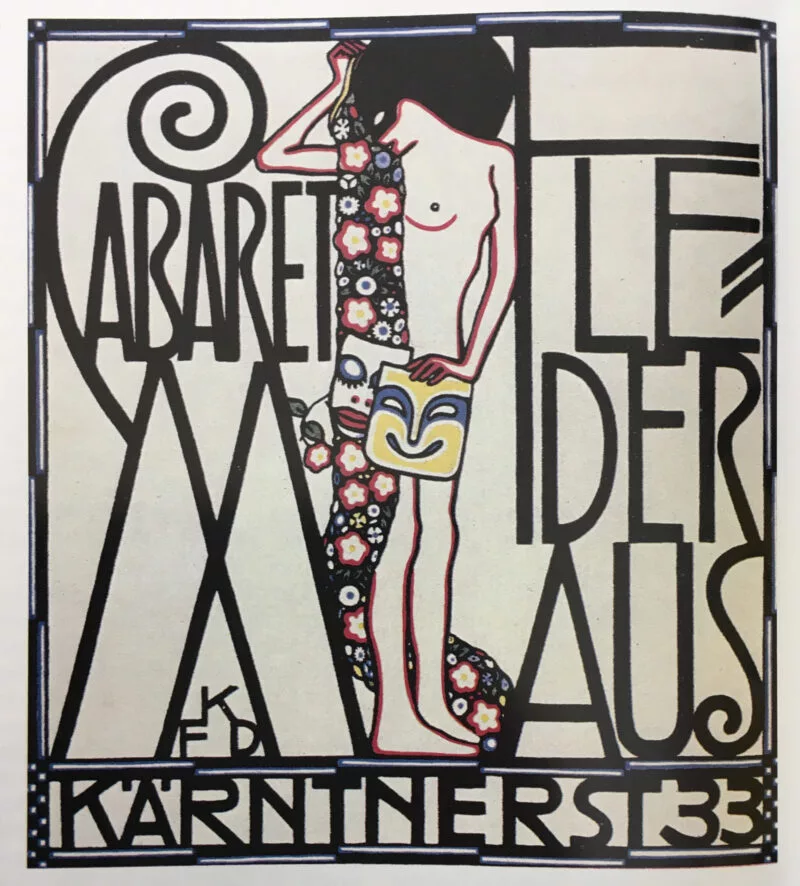
Cabaret Fledermaus
Moving on from coffee houses, Cabaret Fledermaus is another important site. The bar at this venue was designed by Josef Hoffmann for the Wiener Werkstätte, a cooperative artistic workshop, of which both Flöge and Klimt were members, who believed in creating a “total work of art”, merging fashion, design and fine art. The Cabaret was an important meeting place for avant-garde artists and opened in 1907, the year that Klimt painted ‘The Kiss’…
Belvedere Museum
Where exactly is Klimt’s ‘The Kiss’ painting in Vienna? The iconic masterpiece hangs inside the Belvedere Museum, alongside other works by Klimt.
Although we can’t be sure, many do believe that this painting represents the artist and his creative muse, Flöge. Given their embracing pose, the painting invites questions about the exact nature of their relationship – we know that they were close friends and collaborators for twenty-six years. But did Klimt and his muse also enter into a romantic partnership?

If you look closely at ‘The Kiss’, the woman turns away slightly from the man’s embrace, offering only her cheek up for his lips. Perhaps the painting shows us that it was Flöge who wanted to remain friends and thus keep her independence. She would visit London and Paris several times each year in order to attend trade shows, source fabrics and accessories, and to keep up to date with new fashion trends. Marriage would have compromised her career, since most married women at this time were expected to prioritize home life and husbands over work.
It is impossible to know the exact nature of the relationship between Klimt and Flöge, and ‘The Kiss’ cannot be used as evidence for their romance. What is clear, however, is the respect, mutual admiration and commitment which they felt towards one another. Dressed in Flöge’s designs, the two appear bound together, oblivious to all else.
Following the Nazi invasion of Austria, Flöge was forced to close her salon in 1938. Nevertheless, she maintained behind its bolted doors a ‘Klimt room’, in which she kept the artist’s easel, drawings and a collection of his gowns, protecting the treasured memories of their life together. By this time Klimt had died, suffering a stroke in 1918; his last words reportedly were ‘Get Flöge.’
Vienna might invite you in with Klimt’s most famous painting, but I can recommend also staying for the story of the woman art history forgot – the hugely talented fashion designer and significant muse who dressed Klimt’s kiss, Emilie Flöge.
And you can read more about the relationship between Klimt and Emilie Flöge in my book, MUSE, which uncovers the inspiring individuals behind art history’s masterpieces.
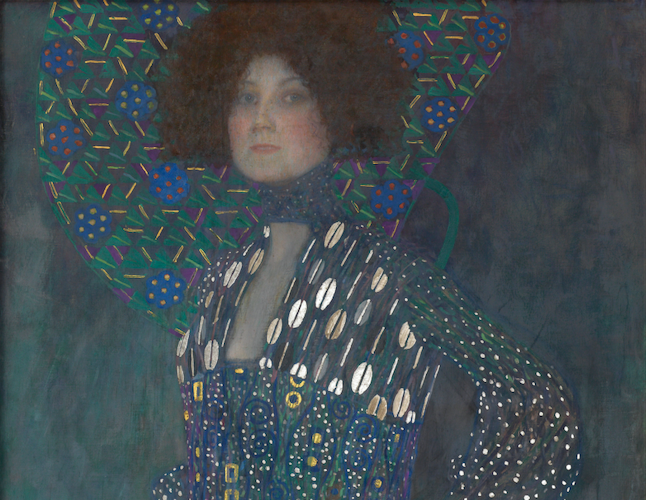

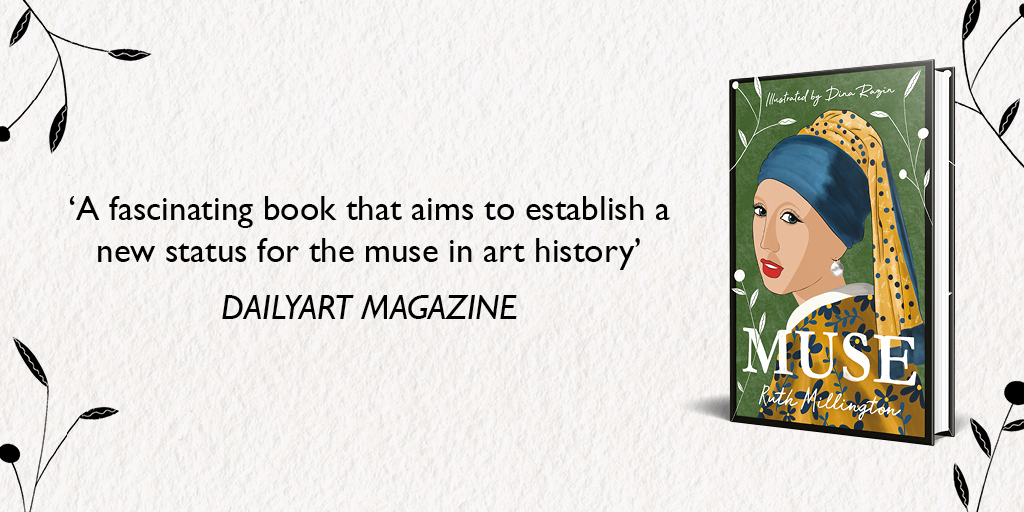
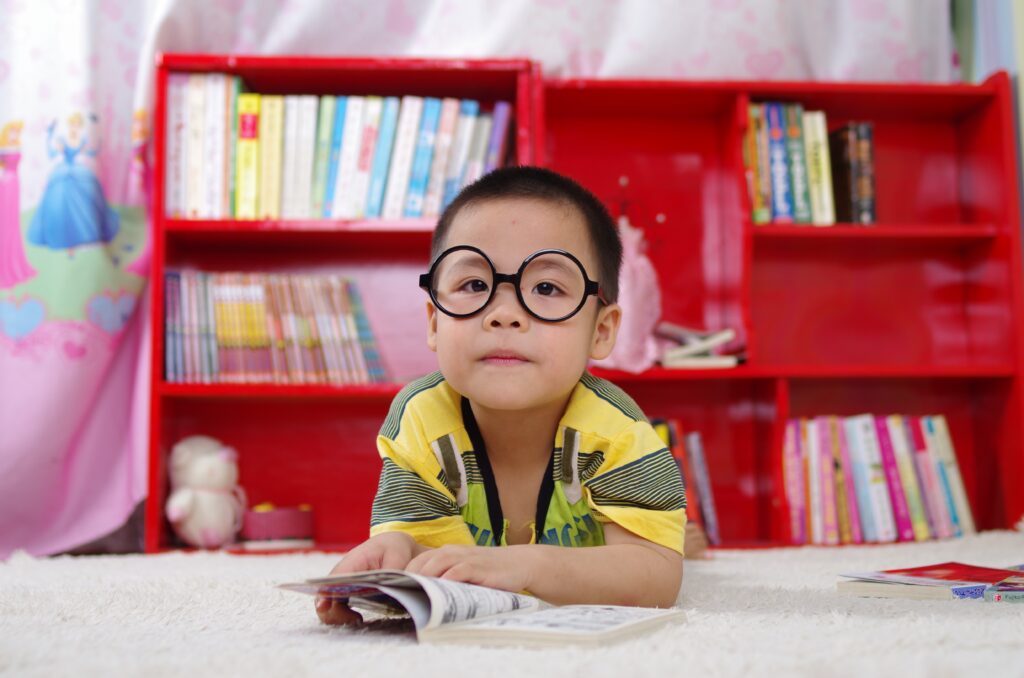
I found your description of the wonderful & informative time you spent in Vienna enlightening. I am fascinated with Emilie Flöge & have had my first book The Kiss published this year. Its prequel Emilie is almost finished. This is an historical novel based on her life.
I will now plan another trip to Vienna as you have shown me there’s so much still to discover.